|
|
General: LUXOR-ABYDOS-EGIPTO (PORTALES STAR GATE/"AGUJEROS DE GUSANO")
Elegir otro panel de mensajes |
|
|
EL CERN, NI CIENCIA NI MAGIA: ALQUIMIA
Hace años que vengo siguiendo las actividades Illuminati en diferentes ámbitos (social, cultural, científico, educativo, político, etc.), y siempre hay algunos puntos que permanecen "oscuros" por un cierto tiempo, hasta que finalmente desvelamos su real significado e intencionalidad. El Gran Colisionador de Hadrones, GCH (en inglés Large Hadron Collider, LHC) del CERN, junto con el Acelerador Relativista de Iones Pesados o RHIC por sus siglas en inglés (Relativistic Heavy Ion Collider), han sido algunos de los "avances" científicos que hemos tenido entre ojos, vigilando su desarrollo para descubrir cuál es el objetivo que se esconde por detrás de ellos, detrás de la "inocente" propuesta de "recrear el segundo previo al Big Bang". Por cierto, la teoría del Big Bang fue elaborada por un jesuita... ¿sabían? Este no fue Papa pero seguro lo canonizan...
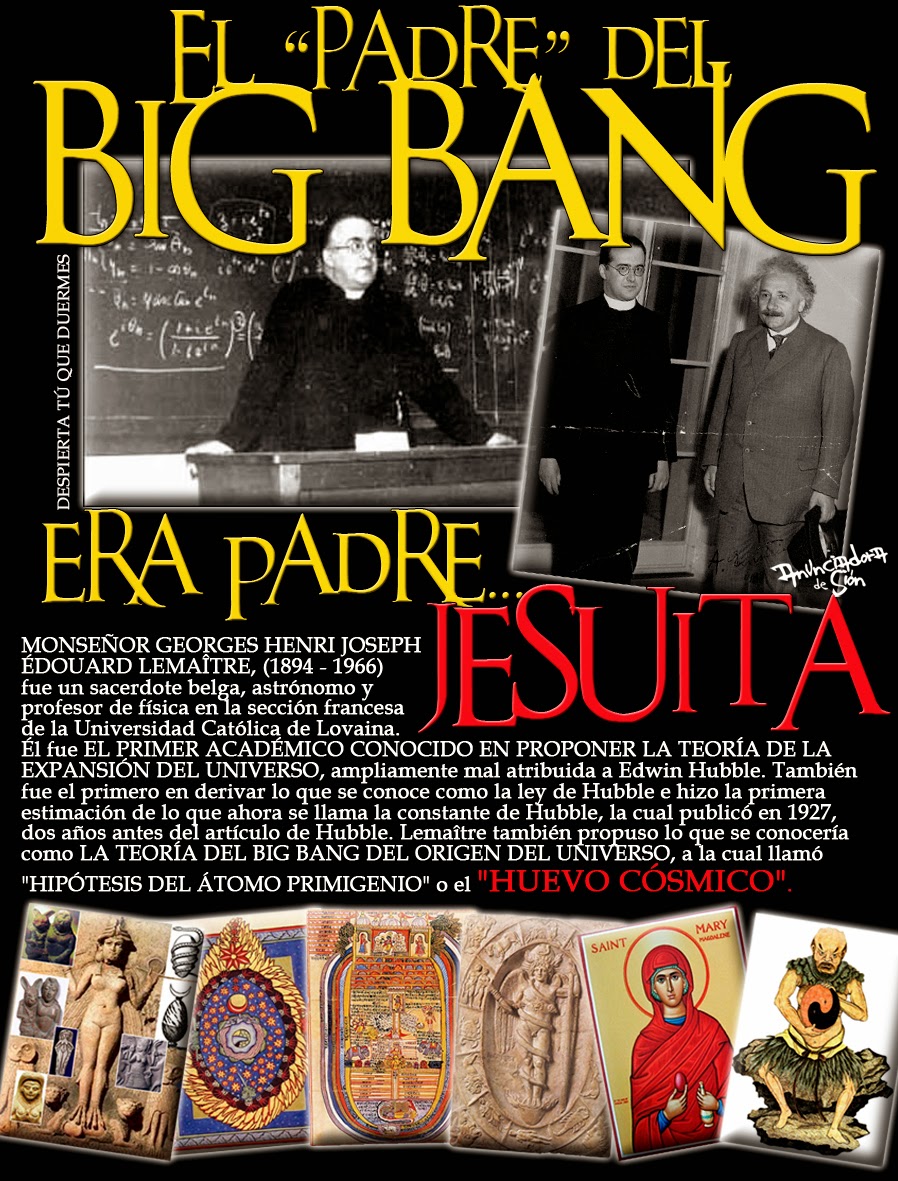
Monseñor Georges Henri Joseph Édouard Lemaître, (1894 - 1966) fue un sacerdote belga, astrónomo y profesor de física en la sección francesa de la Universidad Católica de Lovaina. Él fue el primer académico conocido en proponer la teoría de la expansión del universo, ampliamente mal atribuida a Edwin Hubble. También fue el primero en derivar lo que se conoce como la ley de Hubble e hizo la primera estimación de lo que ahora se llama la constante de Hubble, la cual publicó en 1927, dos años antes del artículo de Hubble. Lemaître también propuso lo que se conocería como la teoría del Big Bang del origen del universo, a la cual llamó "hipótesis del átomo primigenio" o el "huevo cósmico". (Demasiado "mitológico" para mi gusto...). Un huevo cósmico o huevo del mundo es un tema mitológico y cosmogónico usado en los mitos de creación de muchas culturas y civilizaciones. Típicamente el huevo cósmico representa simbólicamente un comienzo de algún tipo.
Irónicamente la teoría del Big Bang se atribuye generalmente a Albert Einstein, quien fue el principal detractor de Leimatre hasta que, años después, comprobó que el religioso belga había acertado en los cálculos astronómicos, de alta complejidad, y juntos profundizaron las investigaciones. (De hecho, el "genial" Alberto anduvo robando por todas partes... también a Tesla).
Volviendo al tema central del CERN, he llegado a la conclusión, después de tomar en cuenta toda la información y las personas asociadas con el proyecto, que no es OTRA COSA SINO UNA APLICACIÓN MÁS DE LOS ILLUMINATI DE UNA ANTIGUA TECNOLOGÍA OCULTA DE LOS ÁNGELES CAÍDOS. Los Illuminati están obsesionados con el cumplimiento de lo que George Bush (padre) llamó el "cumplimiento de un antiguo sueño", en referencia a la vuelta a los días anteriores a Noé, cuando los híbridos gigantes habitaban en la tierra. El restablecimiento del estado de la Atlántida de los reyes filósofos.
Con todo, una de las cosas que más llamó la atención cuando la creación del CERN, y que la mayoría de la gente no conseguía entender, fue CUÁL PODÍA SER LA RELACIÓN ENTRE UN COLISIONADOR DE HADRONES "TECNOLÓGICO Y CIENTÍFICO" Y UNA ESTATUA DEL DIOS SHIVA, "EL DESTRUCTOR", COMPLETAMENTE MÍSTICO Y MITOLÓGICO.
.jpg) |
| Observen el círculo que rodea al dios Shiva en su danza, y compárenlo con el acelerador de partículas. |
Ahora bien, lo interesante de todo esto es que algunos han relacionado todos estos elementos con lo que se conoce popularmente como Stargate, o portales ( "VORTEX-GATE... PROCURANDO LA PUERTA DE SALIDA"). Hay varias teorías acerca de si el CERN es o no un Stargate. Pero vemos un poco acerca de lo que es conocido por los amantes de lo paranormal como "el dispositivo de Osiris", el Ta-Wer. Según los estudiosos, el Ta-Wer era un solo un símbolo místico que representaba la conexión entre Abydos (ciudad egipcia) y un lugar mítico en el mundo subterráneo, interpretado como la "Tierra de los muertos".
Bueno, es un sentimiento común entre los investigadores de ovnis que el Ta-Wer representado en algunas imágenes, en las paredes del templo de Abydos, es una estructura que podría ser parte de un gran dispositivo que activa portales dimensionales, puertas estelares o agujeros de gusano.
Arriba pueden ver un modelo de agujero de gusano cósmico en comparación con el "dispositivo de Osiris", que coincide con la teoría de Kurt Gödel, que por el hecho de que nada puede viajar más rápido que la luz, un "atajo" podría ser abierto en ciertas coordenadas del espacio, para conectar dos puntos distantes. Una enorme cantidad de energía que produciría una enorme cantidad de gravitación que podría "doblar" el espacio, formando dos conos de luz interconectados por un túnel espacio-tiempo donde podría pasar la materia.
La historia oficial: El LHC es un acelerador de partículas, construido para emitir protones a muy alta velocidad y en direcciones opuestas, para que choquen entre sí, creando una enorme cantidad de energía capaz de reproducir las condiciones cósmicas similares a aquellas que generan fenómenos tales como la materia oscura, la antimateria y en última instancia, la creación del universo hace miles de millones de años. El equipo científico mantiene la velocidad de rayo hacia arriba, entre el 3,5 y 12 TeV (Teraelectron voltios) para llegar a una energía de colisión alrededor de 90 veces a más de 500 TeV.
La historia "oculta": De acuerdo con la Prof. Irina Aref'eva y el Dr. Igor Volovich, ambos físicos matemáticos en el Instituto de Matemáticas Steklov en Moscú, las energías generadas por las colisiones subatómicas en el LHC pueden ser lo suficientemente potentes como para rasgar el espacio-tiempo, generando agujeros de gusano. Lo mismo opinan otros físicos (ver aquí).
Es una idea común al 99% de los físicos "fuera del sistema CERN", que el LHC puede producir suficiente energía como para abrir agujeros de gusano, lo que lo convierte en un dispositivo STARGATE enorme. Lo que quiero decir es que la "búsqueda de la partícula de Dios" es una bandera falsa, una tapadera para ocultar OTRA COSA... para variar.
Además de todas estas cosas, como cereza del postre, nos encontramos con los siguientes paneles dentro de las instalaciones del LHC:
Esto es MUY raro... las fotos que ven arriba fueron tomadas DENTRO de la instalación LHC. Se trata de extraños paneles con escritas antiguas, montados sobre una estructura y con algún tipo de haz de luz azul que los rodea, algo que parece ser un sensor de movimiento o cosa parecida. Algunos paneles parecen escritos en mandarín antiguo, otros tienen caracteres árabes, otro en hebreo, otro en sánscrito y otro contiene unos caracteres muy extraños, que no se parecen con nada que haya visto antes. En la India, las únicas personas que leen y escriben en sánscrito, son los estudiosos de los Vedas y los Upanishads, las escrituras escritas en el "lenguaje de los dioses". ¿Por qué estos paneles tienen sensores de seguridad, por qué están en el CERN, y para qué sirven?
Bien, pero las referencias místico-mitológicas no terminan con el antiguo Egipto. Ya conocemos la historia de Nimrod, que construyó una torre que fue diseñada para ser una escalera o puerta de entrada al cielo, la famosa Torre de Babel. Según la mitología tradicional, Nimrod quería conocer a Dios y entender su funcionamiento. Su torre era, literalmente, una escalera a las estrellas, una manera de entrar en la dimensión en la que Dios habitaba.
Hay ocultistas y mitólogos como William Henry que han afirmado que los antiguos como Nimrod y otros utilizaron estas torres y puertas estelares. Las torres crean agujeros de gusano y los dioses de las estrellas pasarían a través de ellas. Pero, por supuesto, a Dios no le gustó la idea y confundió el idioma de la gente de Nimrod. En contrapartida, Nimrod ORGANIZA LA MASONERÍA. Ellos continuaron construyendo estos portales estelares y templos.
A lo largo de la historia antigua ha habido muchos relatos de dioses que viajaban de un lugar a otro utilizando intrincadas maquinarias que los llevarían de una dimensión a otra. Hay historias de la antigua Sumeria que hablan acerca de los llamados "dioses", llegando a través de una puerta estelar doble con columnas, y existen tallas que han representado tal hazaña.
Ha habido muchos intentos de abrir agujeros de gusano y, al mismo tiempo, el objetivo de estos trabajos mágicos era convocar alguna manera demonios o ángeles para venir e iniciar la escatología (los tiempos finales). Hay un montón de magos que han afirmado que han abierto un agujero de gusano usando métodos mágicos. Estos son los métodos que se dice han traído a otros seres a nuestra existencia dimensional.
Todos hemos oído hablar que en algún lugar existe algún grupo secreto que controla el mundo. Sin embargo, es necesario entender que hay varios grupos con agendas programadas, y que no son en absoluto en contra del uso de la magia oscura para lograr sus fines desconocidos. Algunos teóricos esotéricos creen que las fuerzas mágicas trabajan para dar forma a nuestras vidas. Y que la élite tiene entre sus filas al más oscuro de los magos o a los profesionales de las artes oscuras que pueden llegan a la matriz y cambiar las líneas de tiempo mediante la apertura de portales o "puertas estelares" a otros mundos.
La idea de dar un empujón dimensional para abrir una puerta e invitar a un dios o una entidad a entrar, ha sido el desafío desde la época de Nimrod hasta los tiempos de John Dee, Edward Kelly, Aleister Crowley, L. Ron Hubbard y hasta Jack Parsons.
Entre los años 1582 y 1589 el erudito Inglés John Dee llevó a cabo una serie de comunicaciones rituales con un conjunto de entidades desencarnadas que con el tiempo llegó a ser conocido como los ángeles de Enoc. El plan de Dee era utilizar el complejo sistema de magia comunicada por los ángeles para avanzar en las políticas expansionistas de su soberano, la reina Isabel I. ¿Para qué? ¿Simplemente para expandir las tierras? NO. Ya estaban sentando las bases que eran necesaria para desarrollar todo el plan del NUEVO ORDEN MUNDIAL. En primer lugar y lo más importante de todo, conquistar las tierras estratégicamente repartidas alrededor del mundo que hoy les permiten tener una COBERTURA TOTAL DEL GLOBO. Todo esto, evidentemente, no por sabiduría de hombres. Este plan NO ES SIMPLEMENTE HUMANO.
Con la ayuda de su compañero, el investigador ocultista Edward Kelley, planeaban abrir un portal al otro lado con las claves inferiores de Enoc, un alfabeto mágico que fue cantada. Literalmente estaban convocando a los espíritus de los muertos para hacer espionaje para la reina, y de acuerdo con la historia tuvieron bastante éxito. Estas entidades declararon que el nombre celestial para Satanás era Choronzon y que había al menos 4 torres de vigilancia o pilares en los que existen puertas estelares en la tierra. También hay una manera de abrir portales en otro lugar, siempre y cuando ciertas claves y sigilos se utilicen para convocar a las entidades a fin de llevar a cabo un trabajo apocalíptico o hechizo.
Uno de los otros rituales realizados por John Dee fue convocar al Arconte encargado de la puerta, Cernunnos. Para los celtas, Cernunnos, Cerne o Belatucadros, era representado como una figura humanoide, generalmente teniendo cuernos. Uno de los títulos Cernunnos era el señor de la caza, pero a medida que pasaba el tiempo la agricultura se fue uniendo junto con la caza y el Dios Cornudo se convirtió en el dios de la fertilidad también. El culto de esta deidad era realizado esperando alcanzar no sólo buena cacería, sino también garantizar una cosecha abundante e incluso la procreación exitosa de la humanidad. Como tal, lo encontramos representando el concepto de la vida, la muerte y el renacimiento, aunque en otros mitos Cernunnos es representado como un dios con cuernos que controla las serpientes. Las serpientes eran símbolos de la mortalidad, la curación y la resurrección de los muertos, o el uso de los muertos para la adivinación o la nigromancia. Al considerar la muerte como parte integral del "círculo continuo" de la vida, Cernunnos también ha sido asociado a los infiernos, el reino de los muertos.
Las invocaciones y la citación de los arcontes eran parte de algo que se llama "El Trabajo del Apocalipsis". La idea era convocar a varios ángeles y demonios de los bajos fondos para abrir una Puerta Estelar o escalera al cielo.
En realidad, fue uno de los primeros intentos de abrir un portal a otra dimensión y convocar a los espíritus. Fue literalmente un ritual para abrir los secretos del universo y conversar con los dioses. Pero los ángeles nunca permitieron que Dee fuera el instrumento mediante el cual se llevase a cabo la fórmula ritual para iniciar el Apocalipsis. Los ángeles declararon que el "trabajo" tendría que ser realizado en un momento posterior. El ritual sin terminar se sentaría como una bomba de tiempo oculta tictac, esperando que algún mago inteligente, tal vez guiado por los ángeles, para completarlo. Dee nunca recibió la señal para llevar a cabo el Trabajo del Apocalipsis en su vida. Esto estaba reservado para otro siglo y otro hombre. Ese hombre era Aleister Crowley.
Crowley y sus seguidores querían marcar el comienzo de una moral más grave que cualquier otra experiencia en el mundo. Para lograr esto tuvieron que llevar a cabo rituales poderosos. Sus métodos fueron tan aberrantes que Mussolini lo echó de Sicilia llamándolo un "bárbaro". Crowley profetizó que después de su muerte se realizaría un trabajo final o ritual donde se abriría un portal y los "jefes secretos" o antiguos dioses egipcios volverían.
Dos seguidores de Crowley, L. Ron Hubbard y Jack Parsons, intentaron abrir un portal usando uno de los hechizos de Crowley entre 1945 -1946. Fue una serie de ceremonias mágicas llamadas "Trabajo Babilonia" (Babalon Working). Muchas personas creen que lo que atravesó el portal fueron los seres que serían conocidos como los extranjeros "grises".
L. Ronald Hubbard llegó a crear la Cienciología, una religión que enseña que las entidades extraterrestres son responsables del uso de los seres humanos como avatares y que los espíritus extraterrestres fuerzan a la humanidad a hacer el mal.
Jack Parsons se convirtió en el fundador de JPL (Jet Propulsion Lab), y afirmó que durante el "Trabajo Babilonia", tanto él como Hubbard fueron los que lograron la ampliación del portal de Amalantrah de Crowley, permitiendo la entrada a los jefes secretos para "ayudar" a la humanidad. Más tarde intentó otro proyecto secreto, conjurando la clave inferior de Salomón para marcar el comienzo de la gran tribulación. Durante el ritual, él accidentalmente explotó su laboratorio mientras jugaba con poderosos explosivos. Algunos creyeron que él estaba tratando de abrir un Stargate para convocar a los demonios del Goetia.
Los Experimentos del CERN
El CERN está vinculado a varios proyectos secretos que están llevando a cabo la Unión Europea y la Comisión Europea Trilateral. También es el responsable por la existencia de la red de internet (todavía no consigo descubrir cuál es la utilidad de la misma, por lo menos a nivel "portales"; a nivel vigilancia su funcionalidad es OBVIA), y han estado haciendo investigaciones en curso para los gobiernos con respecto a la sostenibilidad global.
También se informó de que en 1999 el CERN propuso y llevó a cabo experimentos cuánticos Vortex en busca de axiones solares. Los axiones son partículas hipotéticas que son componentes de la materia oscura. Con el fin de encontrar estos axiones, el CERN propuso el uso de un imán desarmado llamado Satanás. El nombre era un acrónimo de Solar Axion antena telescópica.
Existen muchos otros experimentos que están relacionados con extraños acontecimientos en diferentes locales, pero sinceramente no tenía ahora el tiempo de verificarlos a todos, de manera que les dejo el dato para los que quieran pesquisar por su cuenta. El hecho más famoso relacionado con uno de estos supuestos experimentos fue la conocida "espiral de Noruega", que apareció en el cielo el 8 de diciembre de 2009... casualmente al mismo tiempo que el colisionador realizaba una prueba. De hecho, más tarde hubo confirmación oficial de que el fenómeno tenía relación con el CERN, y también con el HAARP (no sé cuál).
El famoso 21 de diciembre de 2012
El experimento definitivo en el que finalmente se "descubrió" el bosón de Higgs tuvo lugar entre el 17 y el 21 de diciembre de 2012. ¿Se trató de una mera coincidencia, de una provocación de la comunidad científica o realmente el experimento del CERN tenía relación con el cambio de ciclo Maya? ¿O hay algo más real y oculto? En el centro de nuestra galaxia, la Vía Láctea es un agujero negro super denso.
¿Podrían los experimentos llevados a cabo por el CERN-LHC, el 21 de diciembre de 2012, haber sido una tentativa de liberar a los seres espirituales caídos encerrados en este pozo sin fondo, este Blackhole?
Esta fecha podría haber sido el momento más oportuno para abrir una puerta de entrada o agujero interdimensional en este agujero negro en el centro de nuestra galaxia.
Imagine a la Vía Láctea como una gran cerradura de caja fuerte.
Para abrirla, todas las combinaciones deben estar en el orden correcto, es decir, perfectamente alineadas.
Esta alineación se logró el día 21 de diciembre de 2012, cuando el sistema solar se alineó con el plano galáctico.
La llave (CERN-LHC) podría en aquel momento haber sido insertada (encendida) para abrir la puerta (agujero de gusano a través de la tierra hasta el agujero negro en el centro de la Galaxia).
También a los mensajeros que no guardaron su primer estado sino que abandonaron su propia morada, los ha reservado bajo tinieblas en prisiones eternas para el juicio del gran día. Judas 1:6
El quinto mensajero tocó la trompeta. Y vi que una estrella había caído del cielo a la tierra, y se le dio la llave del pozo del abismo. Y abrió el pozo del abismo, y subió humo del pozo como el humo de un gran horno; y se oscureció el sol y también el aire por el humo del pozo. Y del humo salieron langostas sobre la tierra, y se les dio poder como el poder que tienen los escorpiones de la tierra... Y tienen sobre sí un rey, el mensajero del abismo, cuyo nombre en hebreo es Abadón, y en griego tiene por nombre Apolión DESTRUCTOR.Apocalipsis 9:1-3,11
Porque si Yahweh no dejó sin castigo a los mensajeros que pecaron, sino que, habiéndolos arrojado al Tártaro en prisiones de oscuridad, los entregó a ser reservados para el juicio... 2 Pedro 2:4
Y a Miguel le dijo el Señor: ve y anuncia a Shemihaza y a todos sus cómplices que se unieron con mujeres y se contaminaron con ellas en su impureza, ¡que sus hijos perecerán y ellos verán la destrucción de sus queridos! Encadénalos durante setenta generaciones en los valles de la tierra hasta el gran día de su juicio.
Enoc, capítulo 10
¿Será que el 21 de diciembre de 2012 estos satanistas intentaron (y seguramente con éxito, PORQUE ESTÁ ESCRITO), liberar al REY DE LOS ÁNGELES CAÍDOS, ABADÓN/APOLIÓN, "EL DESTRUCTOR" (SHIVA) DE SU PRISIÓN EN OTRA DIMENSIÓN?
Y aún falta que liberen a los (200) titanes/ángeles caídos que bajaron a la tierra y cohabitaron con mujeres, aquellos Vigilantes de Judas 1:6 y 2 Pedro 2:4, que engendraron una raza de gigantes, los NEPHILINS, que fueron encadenados en LOS VALLES DE LA TIERRA (¿en el interior de la tierra?). El Libro de Enoc dice que estos 200 ángeles caídos (los titanes) están encarcelados en el Tártaro durante 70 generaciones. Una generación en la Biblia es de unos 70-80 años ("El lapso de nuestra vida es de setenta años, y quizás los más robustos lleguen a ochenta", Salmo 90.10). Estos titanes han estado encarcelados por alrededor de 5000-5600 años.
Las profecías mayas y aztecas para el 21 de diciembre de 2012 NO HABLARON NUNCA ACERCA DE UN FINAL APOCALÍPTICO DEL MUNDO. Más bien mencionaban el regreso de "los Nueve", Bolon Yokte Ku. Estos Nueve eran vistos como viviendo en el Inframundo, y se describen generalmente como dioses de los conflictos y de la guerra, y por lo tanto, vinculados con los peligrosos tiempos de transición, malestar social, eclipses, y los desastres naturales como terremotos. Se dice que al final de un baktun, ellos abandonarían su reino subterráneo y surgirían a la superficie de la Tierra, donde batallarían con las 13 deidades de los cielos.
Pero "Nueve Dioses" no son sólo un ingrediente de la cultura maya. Hubo también nueve dioses en la religión del antiguo Egipto, así como en muchas otras (por ejemplo, la India). Para los egipcios, eran también conocidos como los Nueve Principios y estaban vinculados directamente con su Deidad Creadora, Atum. El control de estos Nueve Principios era considerada fundamental para el exitoso gobierno de un faraón: Un control adecuado sobre ellos significaba que el equilibrio (vinculado con la deidad Ma'at) era mantenido y que todo estaba bien con Egipto, el mundo y el universo.
Por tanto, podemos ver que Los Nueve, en un entorno egipcio o maya, estaban estrechamente relacionados, en ambos casos, y determinaban el gobierno de una era, por lo que su consulta es de suma importancia para el éxito de la nación... o del establecimiento de un Nuevo Orden Mundial.
https://despierta-tu-que-duermes.blogspot.com.ar/2015/03/el-cern-ni-ciencia-ni-magia-alquimia.html
|
|
|
|
|
Then next shock didn't make me spill my coffee because I was prepared for this one. Maybe you are too. How closely have you been following?If you've gone and watched Part 7 of 9 to see for yourself the scene with the calendar, you may have noticed a very curious reference. Ravic is standing at the bar and he orders a pack of cigarettes, Chesterfields, from memory, but I may have that wrong. He orders them by brand is the point. A busboy then appears at the bar and makes a loud pointed order for another pack of cigarettes, for one of the customers. This time, the brand is:Osiris cigarettes, with gold-tips.I had to listen a few times to make sure I was hearing it right. Then I had to watch the previous reel to work out that it was Haake, the Nazi, who ordered the cigarettes from the busboy. He specified them: Osiris cigarettes, with gold tips. Was there ever any such brand as Osiris cigarettes?No. There never were any Osiris brand cigarettes, let alone gold-tipped ones. Google it and there's nothing.Well, that's interesting isn't it. Osiris. Gold tipped. Osiris. Gold tipped.Wait: Was there ever any such brand as Osiris cigarettes?No. There never were any Osiris brand cigarettes, let alone gold-tipped ones. Google it and there's nothing.Well, that's interesting isn't it. Osiris. Gold tipped. Osiris. Gold tipped.Wait: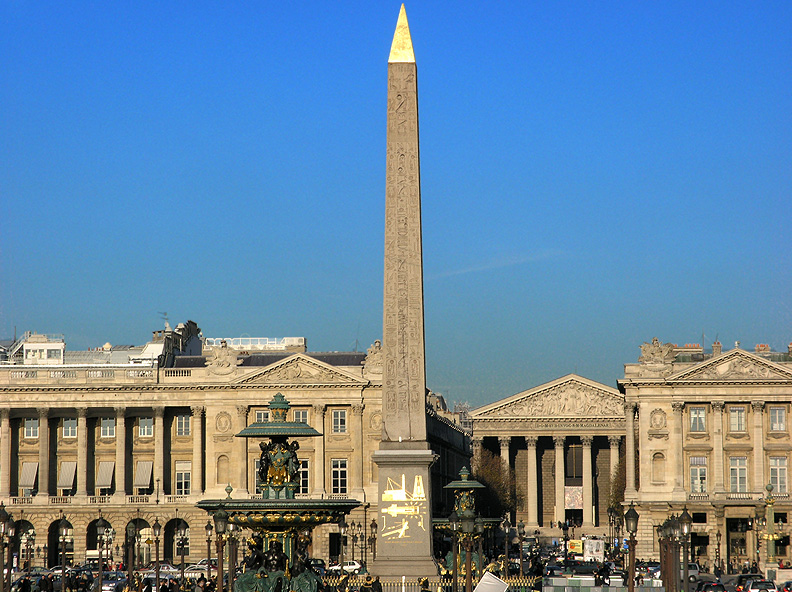
Quote:
The Luxor Obelisk (French: Obélisque de Louxor) is a 23 metres (75 ft) high Egyptian obelisk standing at the center of the Place de la Concorde in Paris,France. It was originally located at the entrance to Luxor Temple, in Egypt.
......
Missing its original pyramidion (believed stolen in the 6th century BC), the government of France added a gold-leafed pyramid cap to the top of the obelisk in 1998. |
What, symbolically, does the obelisk represent? It's simple really:
Quote:
| "Wherever you see an obelisk, you are looking at a representation of the Egyptian god Osiris's lost penis.| |
So, it's a pretty obvious symbolic equation:Osiris gold-tipped cigarettes = Obelisk of Luxor in Place de la Concorde.When I sat down to read the book, this was one of the things I was eager to trace. Is the Osiris reference in the book as well?It certainly is. But it's not a cigarette. It's the name of the brothel where various scenes in the book take place. What has happened is that in the movie, all explicit references to the brothel subplot have been shifted to just below the surface. It must have been deemed too “delicate” for the sensitivities of the time, or something. So, the 1948 movie slightly re-arranges some of the plot points, to not make the brothel business quite so obvious. In doing so, the movie loses the reference to the Osiris brothel as it appears in the book.So look what they have done! Rather than lose the reference, they have transmuted it into the “Osiris brand, gold -tipped cigarettes”. It is obvious now that it was critical that this key word, or trigger word, or plot word, be present in the movie. It is also obvious that they transferred the same symbolism. The Osiris brothel has become the Osiris cigarette/obelisk/penis, in other words nothing has really changed.By the 1985 movie version, times have changed, and the brothel and all of it's plot relevance has been restored to the story. There is even a nice big neon sign over the entrance to the brothel: Osiris. What has happened is that in the movie, all explicit references to the brothel subplot have been shifted to just below the surface. It must have been deemed too “delicate” for the sensitivities of the time, or something. So, the 1948 movie slightly re-arranges some of the plot points, to not make the brothel business quite so obvious. In doing so, the movie loses the reference to the Osiris brothel as it appears in the book.So look what they have done! Rather than lose the reference, they have transmuted it into the “Osiris brand, gold -tipped cigarettes”. It is obvious now that it was critical that this key word, or trigger word, or plot word, be present in the movie. It is also obvious that they transferred the same symbolism. The Osiris brothel has become the Osiris cigarette/obelisk/penis, in other words nothing has really changed.By the 1985 movie version, times have changed, and the brothel and all of it's plot relevance has been restored to the story. There is even a nice big neon sign over the entrance to the brothel: Osiris.  So this Osiris reference is a key trigger word which is embedded throughout the entire saga: book 1945 , movie 1948 and movie 1985.From the Luxor Obeliskin the Place de la Concorde, the Champs Elysees stretches away up the slightly rising hill hill towards the Arc de Triomphe. So this Osiris reference is a key trigger word which is embedded throughout the entire saga: book 1945 , movie 1948 and movie 1985.From the Luxor Obeliskin the Place de la Concorde, the Champs Elysees stretches away up the slightly rising hill hill towards the Arc de Triomphe.   Next quote: Next quote: One of the recurring characters is a doctor, named Charles. Again, this name is changed in the 1948 movie. So that is two references to Charles in the book so far, both changed to other names in the film.And next, another extraordinary scene. It begins with an exact time: 4am.This is, of course, the time that Diana's death was pronounced. Four o'clock in the morning. One of the recurring characters is a doctor, named Charles. Again, this name is changed in the 1948 movie. So that is two references to Charles in the book so far, both changed to other names in the film.And next, another extraordinary scene. It begins with an exact time: 4am.This is, of course, the time that Diana's death was pronounced. Four o'clock in the morning.  That really is an incredible thing. The direct association of the character Joan, with 4 oc'clock in the morning, death, and a sea of flowers. In Europe, the chrysanthemum is the flower of mourning.It's as if all the elements are in place, and all that remains is for Joan to be explicitly identified as Diana. That really is an incredible thing. The direct association of the character Joan, with 4 oc'clock in the morning, death, and a sea of flowers. In Europe, the chrysanthemum is the flower of mourning.It's as if all the elements are in place, and all that remains is for Joan to be explicitly identified as Diana. We are getting closer.And then it comes. Ravic and Joan are up late talking. And this exchange takes place: We are getting closer.And then it comes. Ravic and Joan are up late talking. And this exchange takes place:  Ravic actually calls Joan: Diana. Ravic actually calls Joan: Diana. Then they decide to go for a holiday to Cannes, or Antibes.... Then they decide to go for a holiday to Cannes, or Antibes....
|
|
|
|
|
https://en.rattibha.com/thread/1573482371160088578 |
|
|
|
|
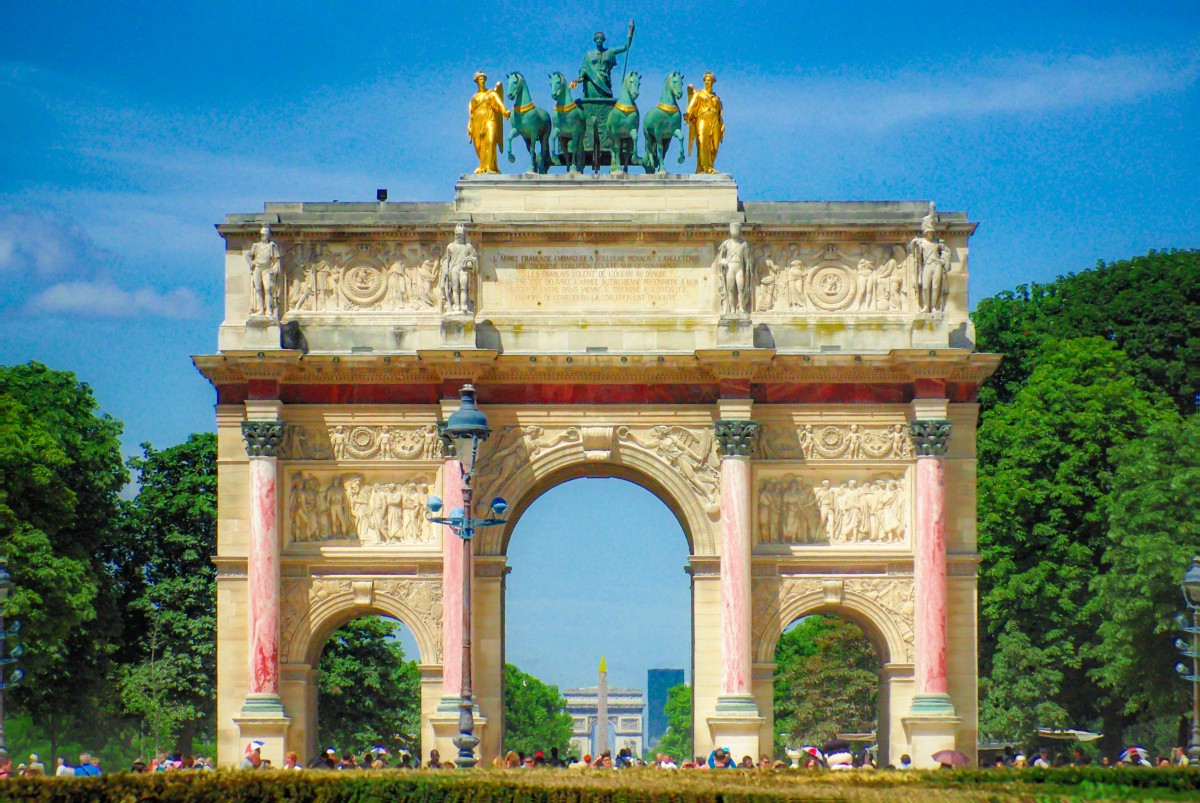 Arc de Triomphe du Carrousel on the historical axis of Paris © French Moments Arc de Triomphe du Carrousel on the historical axis of Paris © French Moments
After the destruction of the Tuileries Palace, the Arc du Carrousel has become the oldest monument aligned with the Historical Axis (besides the ancient obelisk on place de la Concorde).
This is a triumphal arch built by Napoleon from 1807 to 1808 to celebrate the victory of the French imperial army in Austerlitz.
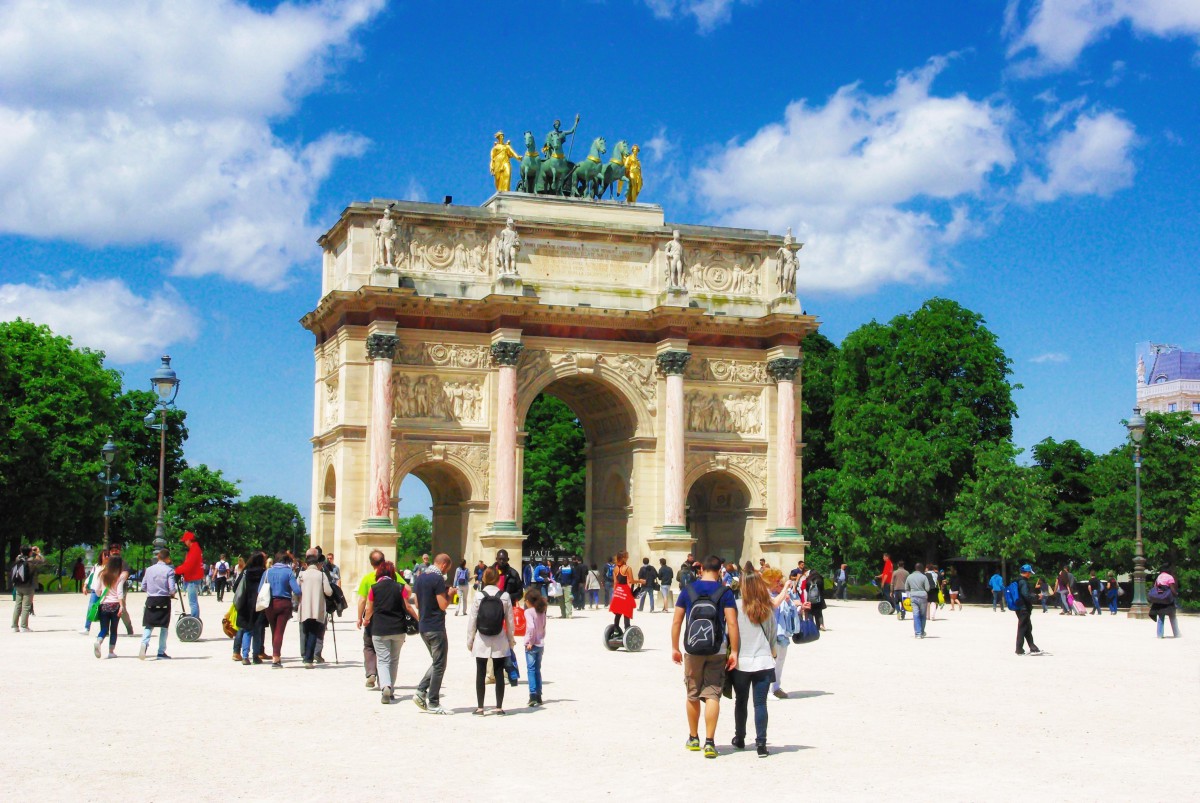 Arc de Triomphe du Carrousel © French Moments Arc de Triomphe du Carrousel © French Moments
However, originally the view of the Great Perspective from Arc du Carrousel was blocked westwards by the Tuileries Palace.
https://frenchmoments.eu/historical-axis-of-paris-la-voie-triomphale/ |
|
|
|
|
'Sirius and Orion sailing across the sky at Dendera.'
Sirius and Orion are sailing across the firmament in boats on the astronomical ceiling in the outer hypostyle hall of the Hathor Temple at Dendera. The ceiling consists of seven separate strips but here we are looking at a detail of the upper register of the EASTERNMOST STRIP.
The star Sirius, or Sothis as it was known by the Egyptians, is depicted here as a reclining cow on a boat but the star was also identified with the goddess Isis. The rise of Sirius on the eastern horizon, after a few weeks of invisibility, signaled the beginning of the summer Nile flood for the Egyptians and the beginning of the New Year.
The second boat carries a god who personifies the constellation Orion, or Sahu as he was called by the Egyptians. The text above the god describes him as 'Sahu, the soul (ba) of Osiris' and thus it can be understood that Osiris is looking back at his wife Isis (in the shape of a cow) to see if she is following him across the sky. Orion/Osiris as a god looking back first appears in Egyptian iconography in stars clocks on coffin
|
|
|
|
|
I have discussed the advanced astronomical knowledge of the Dogon people of Mali. The Dogon believe that they came from Ancient Egypt, Kemet. In this piece, we are going to touch lightly on some of their knowledge of the constellations. I confess that I am not doing my ancestors any justice by such a very scanty piece.
The Ancient Egyptians (Kemites) 3,000 years ago were the first to record the variability of a distant star – and their records could provide useful information for astronomers today.
This star, the brightest star known to us as Sirius, the dog-star, has great meaning to our ancestors of Kemet (modern-day Egypt), and their descendants the Dogon tribe of Mali. The Kemites could predict the flooding of the Nile by observing the movement of Sirius, and such studies led them to develop the calendar which we use today.

The Kemites knew at least 43 constellations in the 13th century B.C. In 1100 B.C. Amenhope wrote the "Catalog of the Universe" in which he identified the major known constellations.

The Kemites believed in a spherical earth revolving on its own axis while inferior planets like Mercury and Venus revolve around the Sun. They also knew about five planets, the retrograde motion of Mars was known, the revolution of Mercury and Venus around the Sun was known. This is what Macrobius Ambrosius Theodosius termed the “Egyptian system,” and went on to say that "it did not escape the skill of the Egyptians."
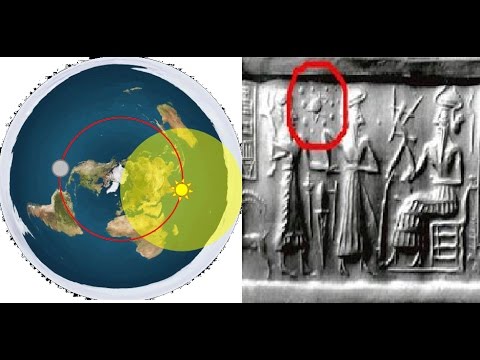
Ancient Egyptians were very interested in the night sky. They were drawn to two bright stars in the North Pole: "the indestructibles" or what we called today as Kochab, in the bowl of the Little Dipper (Ursa Minor), and Mizar, in the middle of the handle of the Big Dipper (Ursa Major).
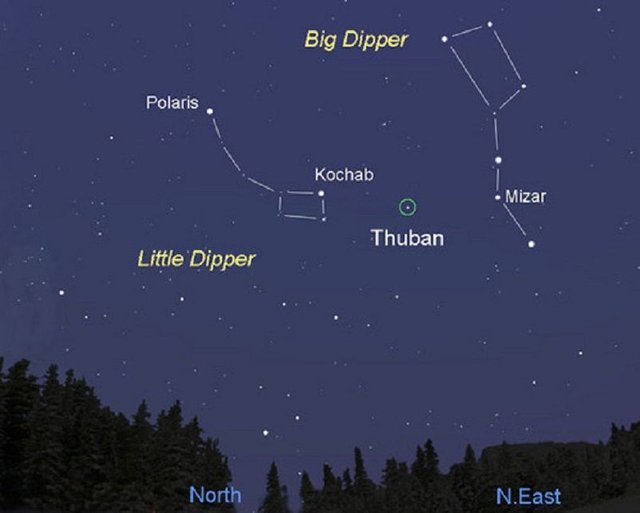
One great evidence of their mastery of the constellations and how their belief in the afterlife can be best illustrated in the sophisticated, decorative illustrations on the roof of the tombs of Rameses VI and Rameses IX in the valley of the Kings in present-day Luxor.
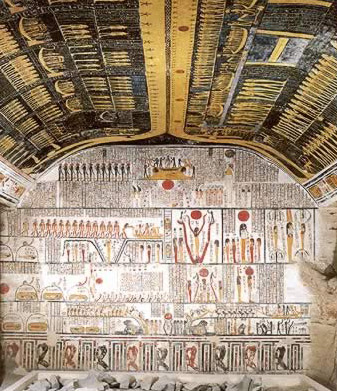
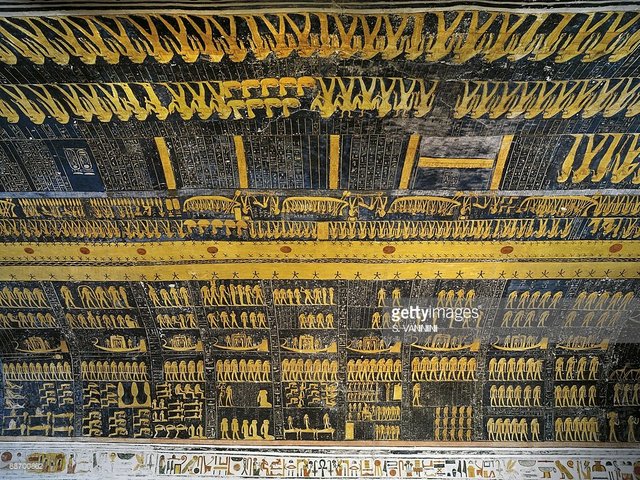
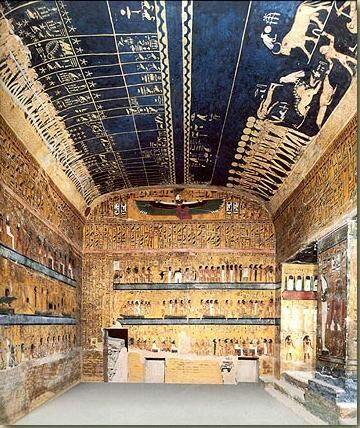
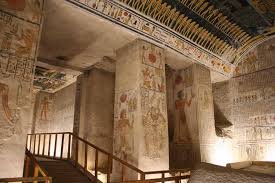
Kemetic astronomy, astrology and religious rites were intermingled. The periods and durations of religious rituals were systematically determined by studying and recording the movements of heavenly bodies, the sun, moon, constellations and stars. These can be evidenced from records found in temples. They built their pyramids and other major structures in alignment with constellations. This we will explore in the next piece.
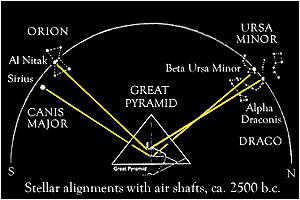
https://steemit.com/africa/@cornerston/african-astronomy-kemetic-knowledge-of-the-stars |
|
|
|
|
Subscribe now for full access and no adverts
Five hundred kilometres south of Cairo, the neatly linear temple at Luxor stands in the long spiritual shadow cast by the vast complex at Karnak dedicated to the god Amun-Re – the ancient Egyptians’ supreme god and a fusion of Amun, the patron god here in ancient Waset (Luxor), and the creator god Re, whose cult centre was at Iunu (Heliopolis, outside modern Cairo).
Luxor temple is often visited as the sun sets on an exhausting day within its sprawling neighbour of Karnak. Yet, as weary visitors pass in the twilight through the iconic gateway or ‘pylon’ and along the central route, they are walking alongside many of the most famous figures in antiquity, including the Egyptian pharaohs Hatshepsut, Amenhotep III, Tutankhamun, Rameses II, and, much later, the Macedonian king Alexander the Great and, perhaps, the Roman emperor Diocletian. For this temple was dedicated to the divine Egyptian ruler or, more specifically, to the divine royal ka or ‘essence’ that flowed through the long line of Egypt’s kings.
While we now borrow the convenient concept of ruling dynasties (family or political groupings) from the 3rd-century BC priest Manetho, earlier Egyptians saw only a continuous line of kings that stretched back to the rule of the god Horus and, further, to Re, the creator sun-god. Thus, the royal ka connected the ruler directly to the gods and his divine predecessors, allowing the king to exercise supreme power as an intermediary between the celestial and earthbound worlds.
 The iconic pylon (gateway) of Luxor temple marked the transition of the processional way associated with the Opet festival and the beginning of the temple. A new king’s royal ka had been with him since he was conceived, but his human form was only subsumed by the divine ka at his coronation. Henceforth, the king became semi-divine while on the throne and until his death, when he became fully divine. Most usually, after their coronation, the rulers of Egypt would come to Luxor each year in a great procession – known as the feast of Opet, which began at Karnak and ended at Luxor temple – to reaffirm the divine nature of the living king that he had inherited from his father. For this was always the Egyptian expectation: a king would die and would be succeeded by his son.
Over so many centuries, however, history could never quite force itself to be so neat. Dynastic families died out or the obvious heir might be female, a commoner, or even a foreigner. Succession to the throne might prove legitimacy in practice, but it also required a more miraculous intervention of the divine spirit. It was here at Luxor, for example, that the royal ka had descended on General Horemheb (reigned c.1323-1295 BC), a few years after the death of the childless Tutankhamun (r. c.1336-1327) that marked the end of the immediate family of the ‘heretic’ king Akhenaten (r. c.1352-1336). It was here, too, that Alexander the Great, already declared a son of Zeus-Amun by the oracle at the western oasis city of Siwa, rebuilt Amun’s shrine. It was even here that the Romans – during the reign of Diocletian (r. AD 284-305) – built a cult chapel celebrating the divine Roman emperor.
Surely, the significance of the site and its relationship to ruling Egypt was still clear one and a half millennia after the temple rose to prominence. For, although it is possible that there were cult structures here from the Middle Kingdom (1985-1650 BC), Luxor appears to have been first favoured by a great but anomalous figure: the female king Hatshepsut.
 Luxor temple from the Nile, as seen in the 1830s by the Scottish artist David Roberts (1796-1864). The oldest part, the main sanctuary, appears as the low building at the furthest right (south). To the left of this is the sun court of Amenhotep III, followed by the ceremonial colonnade completed by Tutankhamun, and the northern court built by Rameses II who also built the pylon, with its characteristic obelisk. The second obelisk had already been removed by this time and is now in the Place de la Concorde in Paris. Image: Public domain. Hatshepsut was the daughter of the warrior king Thutmose I (r. c.1504-1492) and became the consort of his son and successor Thutmose II (r. c.1492-1479) – her half-brother. Following the unexpected death of Thutmose II, the throne passed to Thutmose III (r. c.1479-1425), his young son by a lesser wife. Under such circumstances, there was precedent for a dowager queen to take the role of regent, and the boy’s aunt, Hatshepsut, duly assumed this role. From the beginning, it was clear that Hatshepsut took up the role of regent in a pronounced manner, but it was not until the seventh year of Thutmose III’s reign that she had herself declared king and co-ruler (r. c.1473-1458). In justification, Hatshepsut’s propaganda asserted that her father had, in fact, chosen her as his heir and, indeed, that her mother had been impregnated by Amun-Re in the bodily form of Thutmose I and hence the royal ka had descended upon her.
Throughout her reign, Hatshepsut never lost an opportunity to affirm her legitimacy as ruler through this narrative, and her extensive development of Luxor temple is to be seen in this light. Much of the work was later replaced, but we know that Hatshepsut built six stopping points for the boat shrines – sacred vessels containing the image of Amun, his consort the mother-goddess Mut, and their son Khonsu (together the ‘Theban Triad’) – that were carried from Karnak to Luxor.
It is easiest to think of the construction of the temple as we see it today as having occurred from south to north (that is, towards Karnak). The core of the temple was built some 70 years after Hatshepsut’s reign under the great king Amenhotep III (r. c.1390-1352 BC) – Akhenaten’s father and Tutankhamun’s grandfather. This work consisted of a complex of small rooms on a raised platform at the southern end that included a separate small temple dedicated to Amenemopet – the local manifestation of Amun – and a suite of ritual rooms surrounding a central shrine where the boat shrine of Amun-Re of Karnak would be placed during the Opet festival.
 The female king Hatshepsut receives the divine royal ka from Amun-Re. The arms of the supreme god, seated behind her, form the hieroglyph for ka. To the north of this lies a magnificent open sun court that may have formed the original gathering place in front of the sacred complex. Amenhotep III also began the temple’s distinctive processional colonnade, but this was unfinished at his death.
No building occurred here during the reign of his son Akhenaten, who had a particular antipathy to Amun-Re and his priests and instead worshipped the manifestation of the sun, the Aten, and it fell to Tutankhamun and his immediate successors to finish the colonnade. The temple stayed in this form for half a century until the great builder Rameses II (r. c.1279-1213) realigned the northern end of the temple to match the direction of the processional way from Karnak and added a further great court and the massive pylon.
For our purposes, we will allow the passage of time to stop at this point, though other kings added to the temple, particularly in the late period of pharaonic history: the association with the great, and clearly legitimate, kings Amenhotep III and Rameses II was seen as beneficial to those on shakier ground.
The late summer in ancient Egypt was a time of exhaustion and great tension as the people waited for the annual Nile flood to begin. Settled life along the Nile – known simply as iteru, ‘the river’ – was entirely dependent on the renewal brought to the fields each year by the vast quantities of silt that would cover the narrow strip of land between the river and the desert. The Opet festival, with its principal themes of rebirth and renewal, always occurred near to the beginning of the vital three-month flood season that started in what we call September.
This all-important festival in the Egyptian year gradually extended from 11 days to 24 or 27 days, and began deep in the heart of Karnak temple. To the east, behind the shrine of Amun-Re, Thutmose III had built a great Festival Hall (akhmenu). It was here that the boat shrine dedicated to the living pharaoh, and containing his ka statue, probably resided, in an area specifically dedicated to celebrating the union of the god and king. (It is also possible that the beginning of the Opet festival might have shifted to the sanctuary of Amun-Re, rather than in the festival hall, by Rameses’ reign.) From here the procession would move to the south-west of the Karnak enclosure, and, after further offerings, the boat shrine of Khonsu – the son of Amun-Re and Mut – would be added to the parade. Returning to the main north–south axis of the temple, the procession would leave Karnak along the southward route to Luxor and head for the Precinct of Mut, close to Karnak temple, where the offering process was repeated and the goddess’ boat shrine added to the proceedings.
 The court built by Rameses II in front of the colonnade, characterised by these standing statues of the king, many of which were reused images of former kings. There were now two possible routes to Luxor – either by land or, taking advantage of the prevailing wind, along the Nile – that were used at different times. It is possible that the route chosen may have depended simply on the depth of the Nile at the time. We know from the surviving reliefs along the walls of the colonnade at Luxor that the procession along the river was both colourful and loud. The processional barges would pass down the Nile under sail, with crews on the banks either side to help navigation. No doubt the large crowds on land watching the flotilla pass would have cheered the Egyptian army and exotic foreign mercenary detachments – with their standards being carried proudly to the fore – and all their accompanying horses and chariots intermingled with priests, dancers, and musicians.
The landward route would surely have seen similar scenes, but, as we have noted, there were six stopping places for the priests to rest and for offerings to be made. These six ‘way stations’ were an integral part of Hatshepsut’s design, and it is possible that the processional route was lined with sphinxes, though the avenue of sphinxes that survives at the site dates to a much later period, as it was completed under king Kheperkare Nakhtnebef (Greek: Nectanebo I; r. 380-362 BC).
In Rameses’ time, if the king and gods had travelled down the Nile, they would enter Luxor temple through a gate in the western wall to be greeted first by members of the royal family and state officials, but, if they came by land, they would enter the temple through the great pylon at the northern end that Rameses had largely completed by the third year of his reign. Great cedar flagpoles carrying pennants – features of temples that stretch back to the earliest period of Egyptian history – stood to either side of the entrance, together with four standing figures of the king together with two seated colossi. These colossal seated statues, and the two similar statues at the beginning of the colonnade, specifically represent the divine royal ka as embodied in Rameses II. In front of each of the statues before the pylon, a 25m-tall obelisk rose towards the sky.
 In this scene from the Red Chapel of Hatshepsut at Karnak, priests carry the boat shrine of Amun-Re towards Luxor temple. The whitewashed pylon was originally adorned with a colourful representation of the events of the battle of Kadesh between the Egyptian army and the Hittite empire in the fifth year of the king’s reign (c.1275 BC). A common theme of his buildings, there can be little doubt that Rameses regarded the battle as the greatest military victory in his long life, and it seems certain that the young king did indeed display great personal bravery during the battle, though the outcome was not as clear as his propaganda persistently maintained.
Once past the pylon, we enter a large court dominated by two main features. Immediately to the right lie the remains of a triple shrine that housed the boat shrines of Amun, Mut, and Khonsu. This is in the same alignment as the western gate to the quay on the Nile, suggesting that it was usual to use the river route in Rameses’ reign. Opposite the pylon is a large collection of statues bearing the name of Rameses II, many of which reused official images of previous pharaohs. Looking closely at the pillars in this court, we can also see that many of them, particularly on the east side, have a carving on them of a small bird with human arms raised in adoration. This symbol of the rekhyet- or common-folk suggests that representatives of Egypt’s people were permitted to enter the court to see the beginning of the Opet rituals.
 This triple boat shrine within Rameses’ court reused material from Hatshepsut’s last resting place for the Opet procession and contained the shrines of Mut, Amun-Re, and Khonsu. From here, the procession would leave the throng behind and, between the two great ka statues of Rameses II, enter the colonnade begun by Amenhotep III and completed by Tutankhamun and his immediate successors. The colonnade’s 14 massive open papyrus columns originally supported a stone roof and the only natural light that entered here was from stone grilles high up along the outer walls. When the procession exited the dark colonnade, the shock of the dazzling light captured by Amenhotep III’s sun court – one of the most magnificent pieces of architecture to have survived from ancient Egypt – must have been profound.
The colonnades here, around the large open court, were also roofed, and it is possible that, here too, representatives of Egypt’s people and members of the royal family gathered to see the procession of the boat shrines of the king and gods move through a multi-columned portico and ever closer to the most sacred and private part of the temple – leaving the expectant crowd outside waiting for the king’s triumphant return.
 One of the most magnificent pieces of architecture to have survived from ancient Egypt, the 52m by 46m sun court is surrounded on three sides by two rows of papyrus bud columns.
The boat shrines of Mut and Khonsu were safely stored in small rooms to either side of the central door, while those of Amun-Re and the king passed on. The first room beyond has been called the Chamber of the Divine King, and it was here that the coronation rites were repeated each year. The king would turn his back towards the boat shrine of Amun-Re and a priest – physically representing the god – would place each of the crowns of Egypt on the king’s head. In this manner, the royal ka was retransmitted and the divine king reborn.
Only the king and his ka statue, the boat shrine of Amun-Re, and senior priests would now pass into the offering hall in front of the sanctuary of Amun-Re. Each offering made by the king resulted in a further divine blessing. A gift of pure water from the rising Nile would make the king himself pure; a gift of fresh flowers would make the king young; and a gift of incense would reaffirm the divinity of the king. Further reinforced, Rameses would kneel alone directly before the sanctuary and in front of the opened doors of the boat shrine of the previously hidden god. Here, this time facing Amun-Re, the god himself spiritually crowned him.
 The rekhyet bird appears on a number of columns in Rameses’ court, suggesting that some representatives of the common people of Egypt were present during the Opet festival. Here, the arms are raised in adoration of the name of Rameses II. There were probably other rituals performed within the maze of surrounding rooms, but it seems likely that one of the most important led the king from the sanctuary of Amun-Re to that of Luxor temple’s own manifestation of Amun: Amenemopet, who was a combination of Amun and the ancient self-created god Kamutef, the creator of the world. In front of Amenemopet’s shrine, the king’s offerings and prayers would simultaneously ensure the regeneration of Egypt after the inundation, the rebirth of divine kingship, and the re-energising of Amun-Re of Karnak that would be celebrated joyously and to excess on the return journey to the great complex 2.5 kilometres to the north.
It seems likely that the shrine of Amenemopet – associated with creation and fertility – remained in use well into the Roman period and for some time after the shrine of Amun-Re had fallen into disuse and the Opet festival was no longer celebrated. When the temple became part of a large Roman military camp in the 4th to 6th centuries AD, the door to Amun-Re’s sanctuary was blocked off and the divine king’s chamber in front of it was turned into a cult chamber to the divine emperor. Several Coptic Christian churches were established in the vicinity too, and today the busy mosque and shrine of Abu’l-Hajjaj – built over several centuries between 1257 and 1850 – stands high above the court of Rameses II, representing the final stage of 3,000 years of religious devotion associated with the temple.
https://the-past.com/feature/divine-kings/ |
|
|
 Primer Primer
 Anterior
7 a 21 de 21
Siguiente Anterior
7 a 21 de 21
Siguiente
 Último
Último

|
|
| |
|
|
©2025 - Gabitos - Todos los derechos reservados | |
|
|
.jpg)




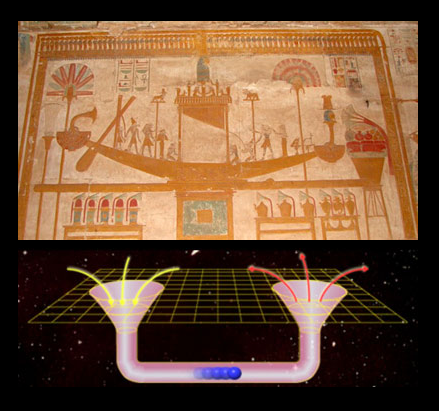








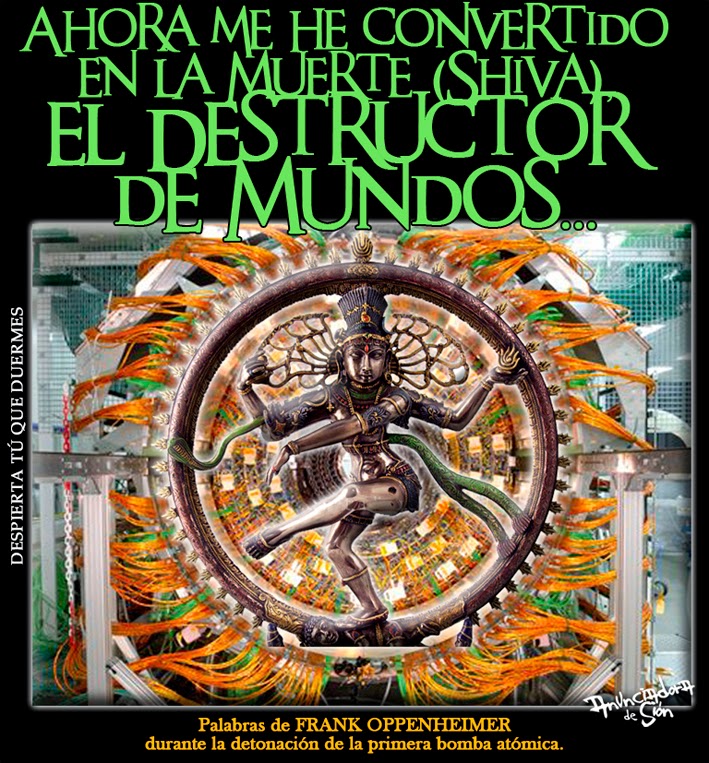
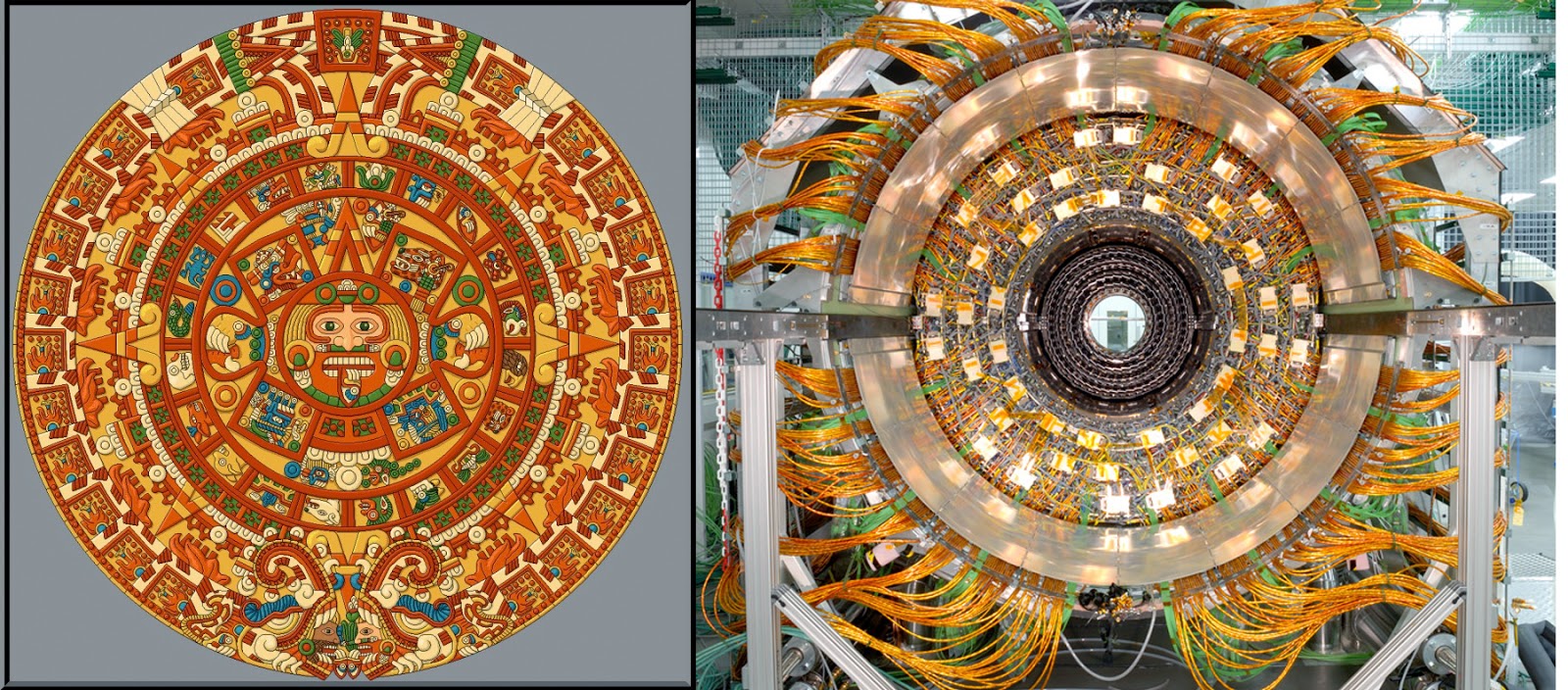



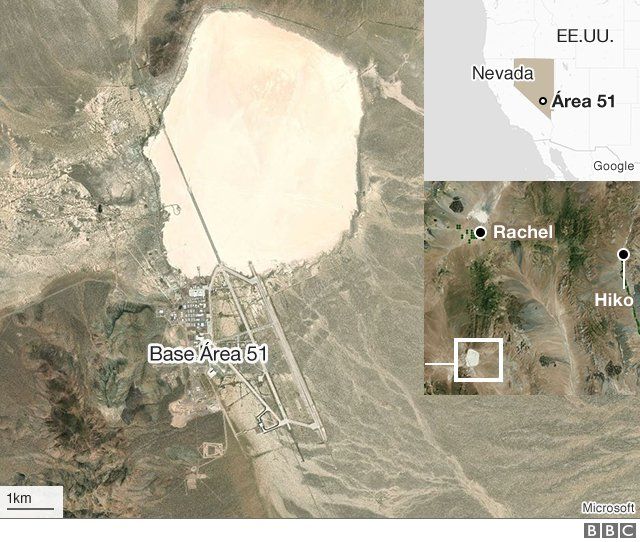






























 keep that date/number in mind. Looking at the towers architectural shape, we see its design is that of a square anti-prism:
keep that date/number in mind. Looking at the towers architectural shape, we see its design is that of a square anti-prism:



















 roll plz…They designed an upside down pentagram, the base of which is at the White House:
roll plz…They designed an upside down pentagram, the base of which is at the White House:






































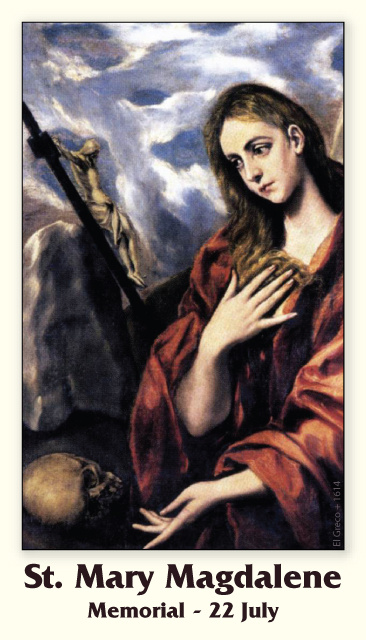

















 The iconic pylon (gateway) of Luxor temple marked the transition of the processional way associated with the Opet festival and the beginning of the temple.
The iconic pylon (gateway) of Luxor temple marked the transition of the processional way associated with the Opet festival and the beginning of the temple. Luxor temple from the Nile, as seen in the 1830s by the Scottish artist David Roberts (1796-1864). The oldest part, the main sanctuary, appears as the low building at the furthest right (south). To the left of this is the sun court of Amenhotep III, followed by the ceremonial colonnade completed by Tutankhamun, and the northern court built by Rameses II who also built the pylon, with its characteristic obelisk. The second obelisk had already been removed by this time and is now in the Place de la Concorde in Paris. Image: Public domain.
Luxor temple from the Nile, as seen in the 1830s by the Scottish artist David Roberts (1796-1864). The oldest part, the main sanctuary, appears as the low building at the furthest right (south). To the left of this is the sun court of Amenhotep III, followed by the ceremonial colonnade completed by Tutankhamun, and the northern court built by Rameses II who also built the pylon, with its characteristic obelisk. The second obelisk had already been removed by this time and is now in the Place de la Concorde in Paris. Image: Public domain. The female king Hatshepsut receives the divine royal ka from Amun-Re. The arms of the supreme god, seated behind her, form the hieroglyph for ka.
The female king Hatshepsut receives the divine royal ka from Amun-Re. The arms of the supreme god, seated behind her, form the hieroglyph for ka. The court built by Rameses II in front of the colonnade, characterised by these standing statues of the king, many of which were reused images of former kings.
The court built by Rameses II in front of the colonnade, characterised by these standing statues of the king, many of which were reused images of former kings. In this scene from the Red Chapel of Hatshepsut at Karnak, priests carry the boat shrine of Amun-Re towards Luxor temple.
In this scene from the Red Chapel of Hatshepsut at Karnak, priests carry the boat shrine of Amun-Re towards Luxor temple. This triple boat shrine within Rameses’ court reused material from Hatshepsut’s last resting place for the Opet procession and contained the shrines of Mut, Amun-Re, and Khonsu.
This triple boat shrine within Rameses’ court reused material from Hatshepsut’s last resting place for the Opet procession and contained the shrines of Mut, Amun-Re, and Khonsu. One of the most magnificent pieces of architecture to have survived from ancient Egypt, the 52m by 46m sun court is surrounded on three sides by two rows of papyrus bud columns.
One of the most magnificent pieces of architecture to have survived from ancient Egypt, the 52m by 46m sun court is surrounded on three sides by two rows of papyrus bud columns.
 The rekhyet bird appears on a number of columns in Rameses’ court, suggesting that some representatives of the common people of Egypt were present during the Opet festival. Here, the arms are raised in adoration of the name of Rameses II.
The rekhyet bird appears on a number of columns in Rameses’ court, suggesting that some representatives of the common people of Egypt were present during the Opet festival. Here, the arms are raised in adoration of the name of Rameses II.